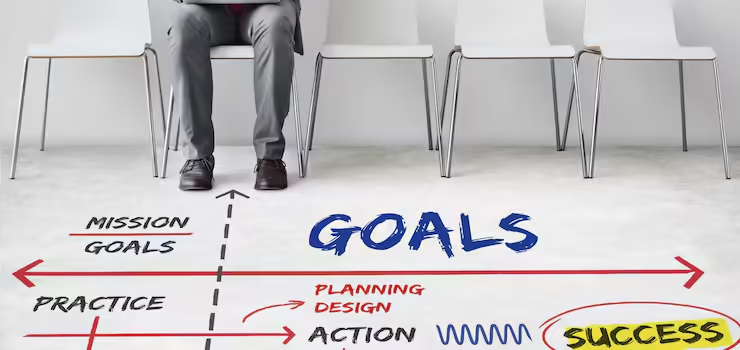
Setting goals is an essential part of personal and professional growth. However, achieving those goals can be challenging without a clear strategy in place. Ndgvli, a unique approach to goal-setting and achievement, provides a framework that helps you stay focused, motivated, and on track. In this article, we’ll explore the principles of Ndgvli and share strategies that can help you turn your aspirations into reality.
Table of Contents
ToggleUnderstanding the Ndgvli Approach
Ndgvli is more than just a method for setting goals; it’s a holistic approach that integrates various aspects of personal development, time management, and psychological resilience. The acronym Ndgvli stands for:
- Nurture: Cultivating a positive mindset and environment that supports your goals.
- Define: Clearly defining what you want to achieve with specific, measurable, and realistic goals.
- Gather: Collecting the resources, knowledge, and skills you need to succeed.
- Visualize: Creating a mental image of your success to enhance motivation and focus.
- Leverage: Utilizing your strengths and resources to overcome challenges.
- Implement: Taking consistent, purposeful action towards your goals.
By following the Ndgvli approach, you can create a structured pathway to success, ensuring that you remain aligned with your objectives every step of the way.
Nurture: Cultivating the Right Mindset
The first step in the Ndgvli approach is to nurture a positive and growth-oriented mindset. Your mindset plays a critical role in determining your success, as it influences how you perceive challenges and setbacks. Here are some strategies to help you cultivate the right mindset:
1. Embrace a Growth Mindset
A growth mindset is the belief that your abilities and intelligence can be developed through effort, learning, and perseverance. Embrace challenges as opportunities to grow, and view failures as learning experiences rather than setbacks.
2. Surround Yourself with Positivity
The environment you create around yourself has a significant impact on your mindset. Surround yourself with supportive, positive influences—whether it’s people, books, or media—that encourage you to stay motivated and focused on your goals.
3. Practice Gratitude
Gratitude helps shift your focus from what you lack to what you have. By practicing gratitude regularly, you can maintain a positive outlook and stay motivated, even when faced with challenges.
Define: Setting Clear and Achievable Goals
The next step in the Ndgvli approach is to define your goals clearly. Vague or unrealistic goals are difficult to achieve, so it’s essential to set goals that are specific, measurable, achievable, relevant, and time-bound (SMART).
1. Be Specific
Clearly define what you want to achieve. Instead of setting a goal like “get fit,” be specific: “lose 10 pounds in 3 months by exercising 4 times a week and eating a balanced diet.”
2. Make It Measurable
Your goals should be measurable so that you can track your progress. For example, if your goal is to save money, specify the amount you want to save and the timeframe in which you want to achieve it.
3. Ensure It’s Achievable
While it’s important to challenge yourself, your goals should also be realistic. Setting goals that are too ambitious can lead to frustration and burnout. Assess your current resources, time, and capabilities to ensure your goals are achievable.
4. Keep It Relevant
Your goals should align with your long-term objectives and values. Ask yourself why this goal is important and how it contributes to your overall growth and happiness.
5. Set a Time Frame
A deadline creates a sense of urgency and helps you stay focused. Break down your goal into smaller milestones with specific deadlines to maintain momentum.
Gather: Preparing the Resources You Need
Once your goals are defined, the next step is to gather the resources, knowledge, and skills you need to achieve them.
1. Identify the Resources Required
Determine what resources—whether it’s time, money, tools, or support—you need to accomplish your goals. Make a list and start acquiring them one by one.
2. Acquire Necessary Skills
If your goal requires certain skills or knowledge that you don’t currently possess, invest time in learning. Take courses, read books, or seek mentorship to bridge the gap.
3. Build a Support System
Having a strong support system can make a significant difference in achieving your goals. Surround yourself with people who believe in your vision and can offer guidance, motivation, and accountability.
Visualize: Creating a Mental Image of Success
Visualization is a powerful technique that can help you stay focused and motivated by mentally picturing yourself achieving your goals.
1. Create a Vision Board
A vision board is a visual representation of your goals. It can include images, quotes, and symbols that inspire you. Place your vision board somewhere you can see it daily as a reminder of what you’re working towards.
2. Practice Daily Visualization
Spend a few minutes each day visualizing yourself achieving your goals. Imagine the process, the challenges you’ll overcome, and the feeling of success. This practice helps reinforce your commitment and keeps you motivated.
3. Use Affirmations
Affirmations are positive statements that reinforce your belief in your ability to achieve your goals. Write down a few affirmations related to your goals and repeat them daily to build confidence and focus.
Leverage: Utilizing Your Strengths and Resources
Leveraging your strengths and resources effectively is crucial to overcoming obstacles and making steady progress toward your goals.
1. Identify Your Strengths
Reflect on your past achievements and the qualities that helped you succeed. Identify your strengths and think about how you can use them to your advantage in achieving your current goals.
2. Maximize Your Resources
Make the most of the resources you have at your disposal. This could mean optimizing your time management, using tools and technology to streamline your efforts, or leveraging your network for support and opportunities.
3. Adapt to Challenges
Challenges are inevitable, but how you respond to them determines your success. Be flexible and willing to adapt your strategies as needed. When faced with a roadblock, think creatively about how to leverage your resources to find a solution.
Implement: Taking Consistent Action
The final step in the Ndgvli approach is implementation—taking consistent, purposeful action toward your goals.
1. Create an Action Plan
Break down your goal into actionable steps. Create a plan that outlines what needs to be done, when it needs to be done, and how you will do it. Having a clear plan helps you stay organized and focused.
2. Take Daily Action
Consistency is key to achieving your goals. Make it a habit to take at least one action each day that brings you closer to your goal. Even small steps add up over time.
3. Monitor Your Progress
Regularly review your progress to see how far you’ve come and what still needs to be done. Adjust your action plan if necessary and celebrate your milestones to stay motivated.
4. Stay Accountable
Accountability is a powerful motivator. Share your goals with someone you trust and ask them to hold you accountable. Regular check-ins can help you stay on track and maintain momentum.
Conclusion
Achieving your goals requires more than just setting them—it requires a clear strategy, the right mindset, and consistent action. The Ndgvli approach provides a comprehensive framework that can help you stay focused, motivated, and on track. By nurturing a positive mindset, defining clear goals, gathering necessary resources, visualizing success, leveraging your strengths, and taking consistent action, you can unlock your full potential and achieve your aspirations.
Whether you’re striving for personal growth, professional success, or any other objective, Ndgvli offers the strategies and tools you need to turn your goals into reality. Start implementing these strategies today, and watch as you move closer to achieving the success you envision.













